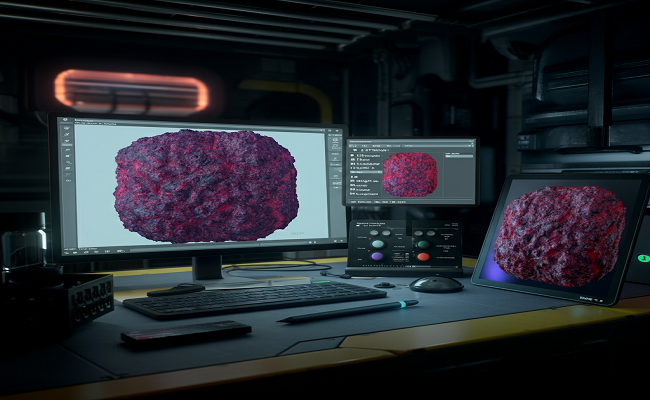
What is Photoacanhante?
Photoacanhante is a phenomenon in which the interplay of light and color creates a vibrant spectrum perceived by the human eye. This term encapsulates the scientific principles that govern how light interacts with various surfaces, leading to diverse visual experiences in nature. In essence, photoacanhante can be understood as a combination of photo, relating to light, and canhante, suggesting a sense of color and vibrancy. When light strikes objects, it can be absorbed, reflected, or transmitted, which contributes to the visual characteristics we observe. Understanding this phenomenon is crucial not only in the context of nature but also across various fields such as art, photography, and plant biology.
In the natural world, photoacanhante plays a significant role in how we perceive environments. For instance, plants utilize photoacanhante during photosynthesis, a process essential for converting light energy into chemical energy. This function highlights how vital the interaction between sunlight and plant pigments, such as chlorophyll, is for sustaining life. Moreover, in artistic realms, photoacanhante serves as a fundamental principle for creating depth, contrast, and moods in visual storytelling. Artists constantly play with colors to evoke specific emotions, relying on the underlying mechanisms of photoacanhante to achieve desired effects.
The significance of photoacanhante extends beyond aesthetic applications; it also influences practical fields, including photography. Photographers leverage the natural variations of light and color to enhance their compositions, creating images that resonate with viewers. The ability to capture the essence of photoacanhante allows for an interpretation of different scenes, transforming banal subjects into striking visual representations. Overall, photoacanhante is an intricate phenomenon that enriches our perceptions and experiences, making it a compelling concept worth exploring further.
The Science Behind Photoacanhante
The phenomenon of photoacanhante is rooted in the fundamental principles of physics and biology, showcasing the intricate relationship between light and color perception. At its core, photoacanhante refers to the ability of certain organisms or materials to reflect or emit colors in response to specific light wavelengths. This process begins with the interaction of light, which travels in waves and can be categorized by its wavelength, frequency, and energy. The visible spectrum, which consists of various colors, plays a critical role in how photoacanhante is perceived by various species.
When light strikes an object, certain wavelengths are absorbed while others are reflected. Organisms exhibiting photoacanhante showcase structures that manipulate these wavelengths, often through complex biological mechanisms. For instance, the presence of specialized pigments or nanostructures in certain plants or animals allows them to either absorb certain wavelengths or scatter light to generate distinct colors. This adaptive trait serves various ecological functions, such as attracting pollinators, camouflaging against predators, or aiding in temperature regulation.
Recent studies have revealed fascinating breakthroughs in understanding the mechanisms behind photoacanhante. Researchers have isolated specific proteins that are responsible for the color-changing capabilities in organisms, such as chameleons and certain species of cephalopods. These findings have opened up new avenues in fields like biomimicry, where scientists endeavor to replicate these natural processes in synthetic materials. Additionally, studies have shown that photoacanhante is not only an artistic phenomenon but also a critical component of various ecosystems, highlighting its contribution to biodiversity.
In summary, the science of photoacanhante encompasses a blend of physics, biology, and ecology, unveiling the complex interplay of light, color, and life in the natural world. This rich tapestry of interactions serves as a testament to nature’s ingenuity and continues to inspire ongoing research and exploration.
Applications of Photoacanhante in Art and Design
The concept of photoacanhante has found remarkable application in the realms of art and design, serving as a transformative influence across various mediums. Artists and designers alike have embraced the principles of photoacanhante to enhance their works by infusing nature’s vivid color palette into their creations. One notable example is the use of photoacanhante in visual art, where artists manipulate light and shadow to evoke an emotional response that mirrors the ambiance of natural surroundings. This synergy of color and light fosters deep connections between the artwork and the viewer.
In graphic design, the principles of photoacanhante have been adapted to create compositions that resonate with contemporary aesthetics. Designers often utilize this approach to evoke a sense of harmony and balance in branding, advertising, and digital media. For instance, a prominent advertising campaign may leverage the color contrasts derived from photoacanhante to draw attention and evoke specific feelings tied to a product or service. The integration of natural color schemes becomes instrumental in capturing the audience’s attention in an increasingly cluttered visual landscape.
Moreover, interior design has also witnessed the influence of photoacanhante, as spatial design increasingly adopts nature-inspired palettes. Designers harness the calming and invigorating effects of color inspired by photoacanhante, creating environments that blend seamlessly with natural elements. By using colors that reflect the beauty found in the natural world, interiors are transformed into inviting spaces that promote well-being and creativity.
Various case studies illustrate the success of incorporating photoacanhante into artistic practices, showcasing artists who effectively utilize these principles to evoke emotion and convey messages. The continued exploration of this concept indicates its significance in shaping contemporary art and design, inspiring future creators to harness the beauty of nature’s colors.
Future of Photoacanhante: Innovations and Beyond
The evolving landscape of photoacanhante research promises exciting advancements that could transform our understanding and utilization of this natural phenomenon. Emerging technologies are likely to enhance the study of photoacanhante, leading to breakthroughs in areas such as environmental science, architecture, and digital arts. Innovative techniques, including advanced imaging technologies and artificial intelligence, are revolutionizing how we analyze the intricate interactions between light and color found in nature.
In environmental science, the principles of photoacanhante are being integrated into sustainable practices. For instance, researchers are exploring how the natural color palette can inform the design of energy-efficient buildings. By mimicking natural light interactions, architects can create structures that harmonize with their surroundings and utilize less artificial lighting. This approach not only enhances aesthetic appeal but also contributes to sustainability by reducing energy consumption and increasing the building’s resilience to climate change.
The integration of photoacanhante principles into digital arts represents another promising direction. Artists and designers are utilizing the interplay of color and light to create immersive experiences in virtual environments. As digital technologies continue to evolve, the potential for creating captivating multimedia experiences that highlight the beauty of photoacanhante is becoming increasingly feasible.
Moreover, ongoing research into photoacanhante could lead to innovations in various sectors, such as agriculture, where understanding light absorption through plants can improve crop yield and sustainability. This may involve exploring new ways to optimize growth through artificial lighting that emulates natural light’s effects on plant development.
Overall, the future of photoacanhante holds immense potential for interdisciplinary advancements. By harnessing this natural phenomenon, we can forge new pathways in creativity and sustainability, significantly impacting our environment and enhancing our cultural expressions.



